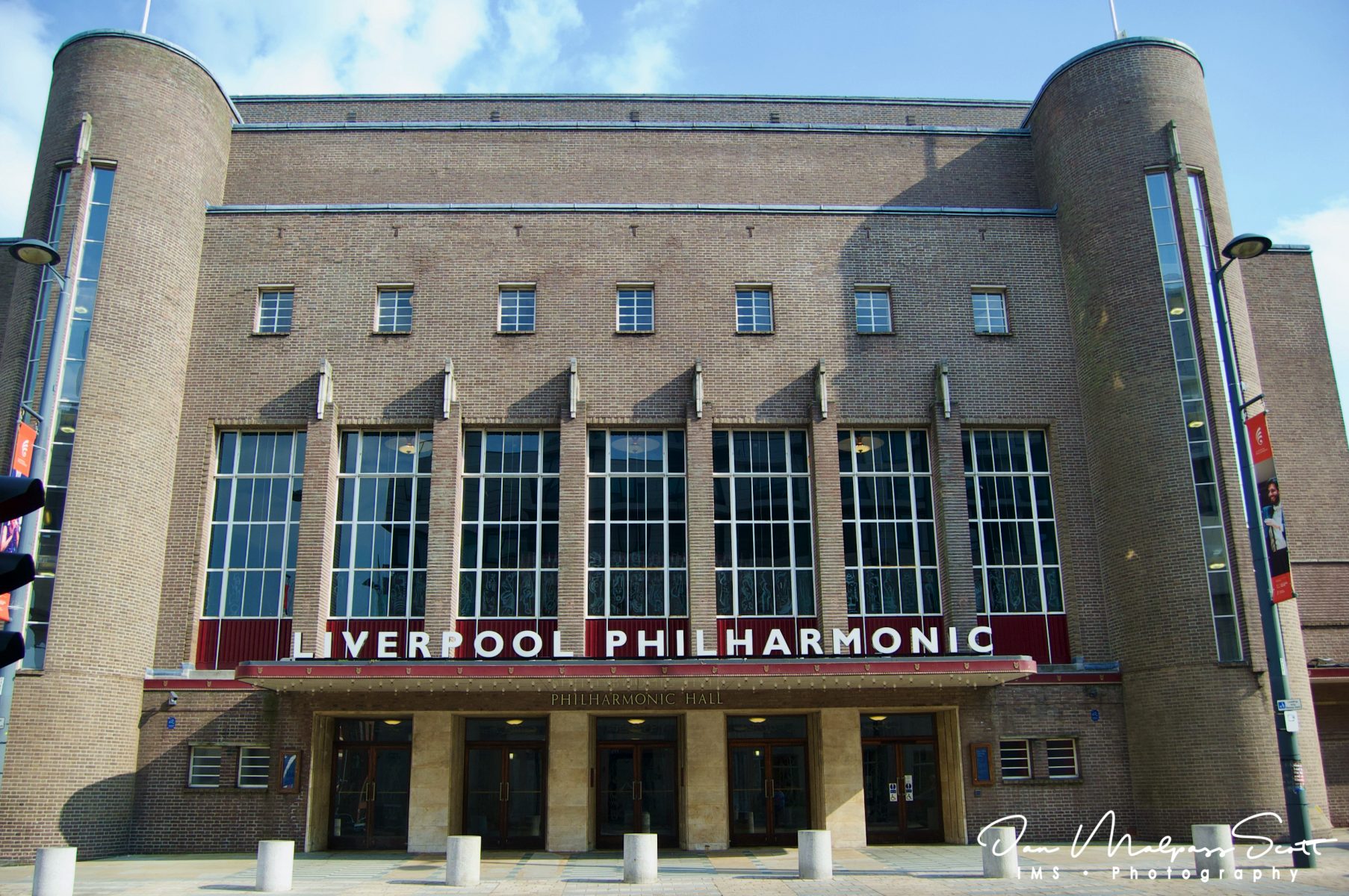Liverpool Philharmonic Hall is a concert hall in Hope Street, in Liverpool, England. It is the home of the Royal Liverpool Philharmonic Society and is recorded in the National Heritage List for England as a designated Grade II* listed building. It is not the original concert hall on the present site; its predecessor was destroyed by fire in 1933 and the present hall was opened in 1939.
The original concert hall which housed the society was destroyed when fire broke out during the evening of 5 July 1933.
The building of a new hall was delayed by the demands of Liverpool City Corporation, which announced that it would not support the building of a venue suitable only as a concert hall. The corporation demanded an auditorium equally suited to cinema and theatre use. Controversy ensued with vocal opposition to the corporation’s stance led by the doyen of British conductors, Sir Henry Wood. A compromise was reached and work began in June 1937.
Herbert J. Rowse was commissioned to design a new hall on the site of the previous hall. Rowse’s design was in Streamline Modernestyle. It incorporated an organ built by the Liverpool firm of Rushworth and Dreaper with a console which can be lowered from the stage. The hall was officially opened on 19 June 1939, and inaugurated the next day with a concert conducted by Sir Thomas Beecham. The Manchester Guardian commented, “The magnificent compliment Liverpool has paid to the cause of music in England almost takes one’s breath away … a hall of great size, noble proportions, and up-to-date appointments … ready to take its place among the most eminent homes of musical culture in this or any other country”. The final cost of the hall was a little over £120,000 (equivalent to £7.61 million in 2020) and the architect was paid £6,869 (equivalent to £435,000 in 2020). An extension was added to the rear of the hall which was completed in 1992, designed by Brock Carmichael Associates. A major refurbishment of the hall was carried out in 1995 at a cost of £10.3 million. This included the complete replacement of the fibrous plaster interior with concrete, carried out again by Brock Carmichael, working with the acoustic consultant firm Lawrence Kirkegaard Associates. A local violinist, John Frederick Clarke, who was part of the famed RMS Titanic orchestra, and the other band members who died during the ship’s sinking in 1912 are all commemorated on a memorial plaque within Philharmonic Hall.
A further renovation, costing around £14 million, was completed in October 2015, primarily refurbishing the main concert hall and auditorium, and adding a new performance space named the Music Room.
The hall is built with fawn-coloured facing bricks, and is mainly in three storeys. It has a symmetrical frontage with a canopied entrance flanked by semicircular stair turrets. Above the entrance are seven windows that are separated by piers surmounted by carved abstract motifs. Outside the hall and separated from it are two piers for the display of posters. The architectural historians Pollard and Pevsner and the author of the description in the National Heritage List for England agree that the design of the hall was influenced by the Dutch architect W. M. Dudok.
The windows above the canopy contain glass etched by Hector Whistler. Glass doors panels by Whistler, originally from the building, and depicting musical instruments in art deco style, were featured on the BBC One’s Antiques Roadshow in March 2015. Thirteen Pilkington glass panels had been purchased from a market in France by a Liverpool dealer, who expressed an interest in donating some to local museums.[28] Inside the entrance to the hall is a copper memorial to the musicians of the Titanic by J. A. Hodel, and on the landings are gilded reliefs of Apollo by Edmund C. Thompson. The interior of the auditorium is “sensuously curved”. On the walls on each side are incised female figures in art deco style that represent “musical moods”, also by Thompson. On the back wall above the platform was a kinetic structure, called Adagio, designed by Marianne Forrest in 1995; however this was moved to the nearby Harold Cohen Library at the University of Liverpool in 2016.
The hall contains a 3-manual pipe organ built by Rushworth and Dreaper, with a console on a lifting platform that can be played on the stage or from the area below the stage, and a Walturdaw rising cinema screen.[31]


